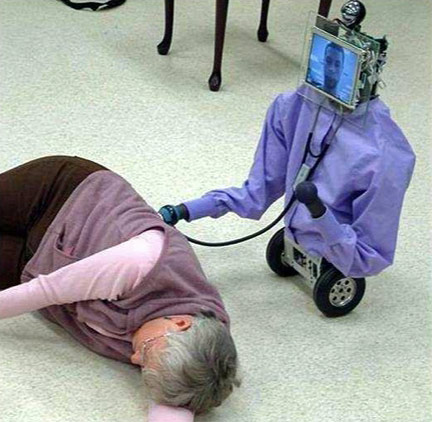Robots rising to the baby-boomer challenge
Could care-home robots help look after an ageing population?

Researchers from the University of Massachusetts (UMASS) in the US believe they may have come up with a solution to help relieve the pressure of having to care for an increasingly aged population – residential-home robots.
According to a report in LiveScience the robots are able to carry out a number of functions likely to be useful in such an environment, including picking up small objects, using a stethoscope, reminding patients to take their prescriptions and even dialling US emergency-services number, 911.
“For the first time, robots are safe enough and inexpensive enough to do meaningful work in a residential environment,” explains Rod Grupen from the UMASS team who’ve built the prototype.
The uBOT-5
Dubbed the uBOT-5 by the team who built it, each robot costs about $65,000 (£32,500) to build in the lab. However, Grupen believes those figures could be slashed to just a “couple of thousand” if the robots were to be mass produced in a dedicated factory.
If that’s the case then residential-home robots could end up paying for themselves within a month of deployment – especially given that a human equivalent can reportedly cost up to £1,500 (£750) to employ per week.
Better still, the uBOT-5 developed by UMASS can do more than just administer live-saving treatment – it’s also able to act as a ‘virtual’ house doctor by using its on-board camera, microphone, internet connection and touch-screen display.
Get daily insight, inspiration and deals in your inbox
Sign up for breaking news, reviews, opinion, top tech deals, and more.
And as Grupen points out, on-baord internet access has other benefits too, such as enabling granny to receive virtual visits from her grandchildren from just about anywhere in the world.